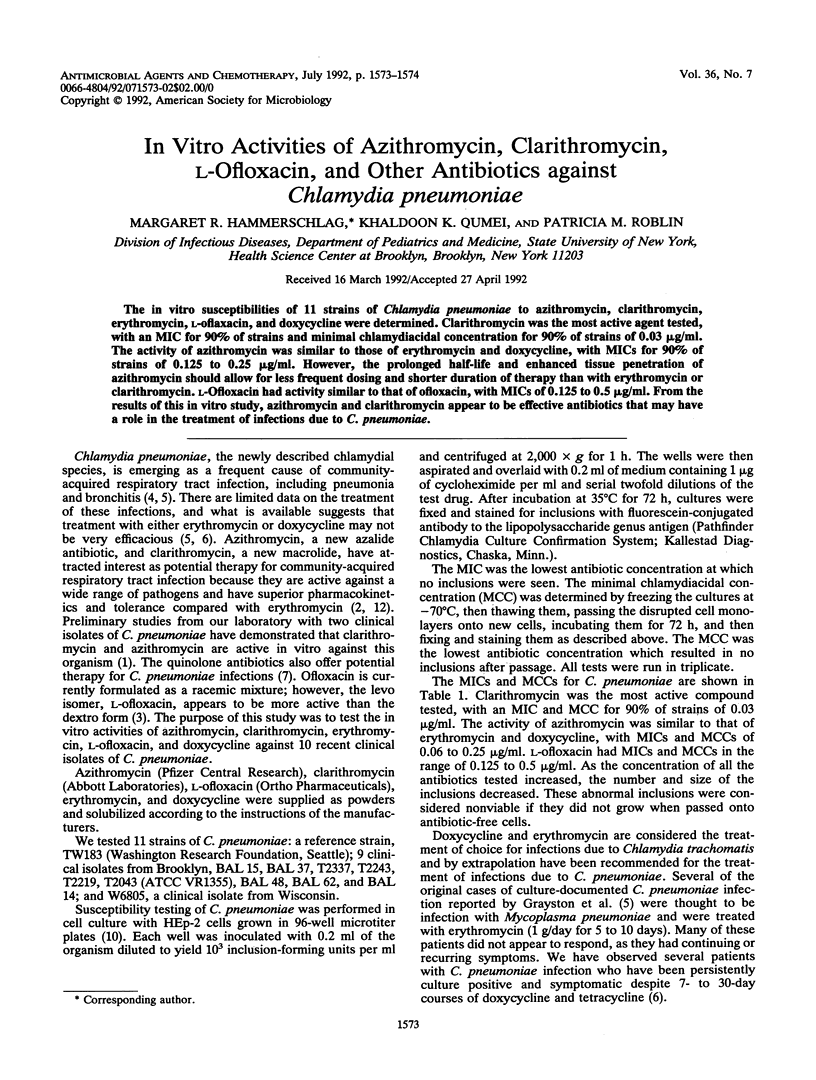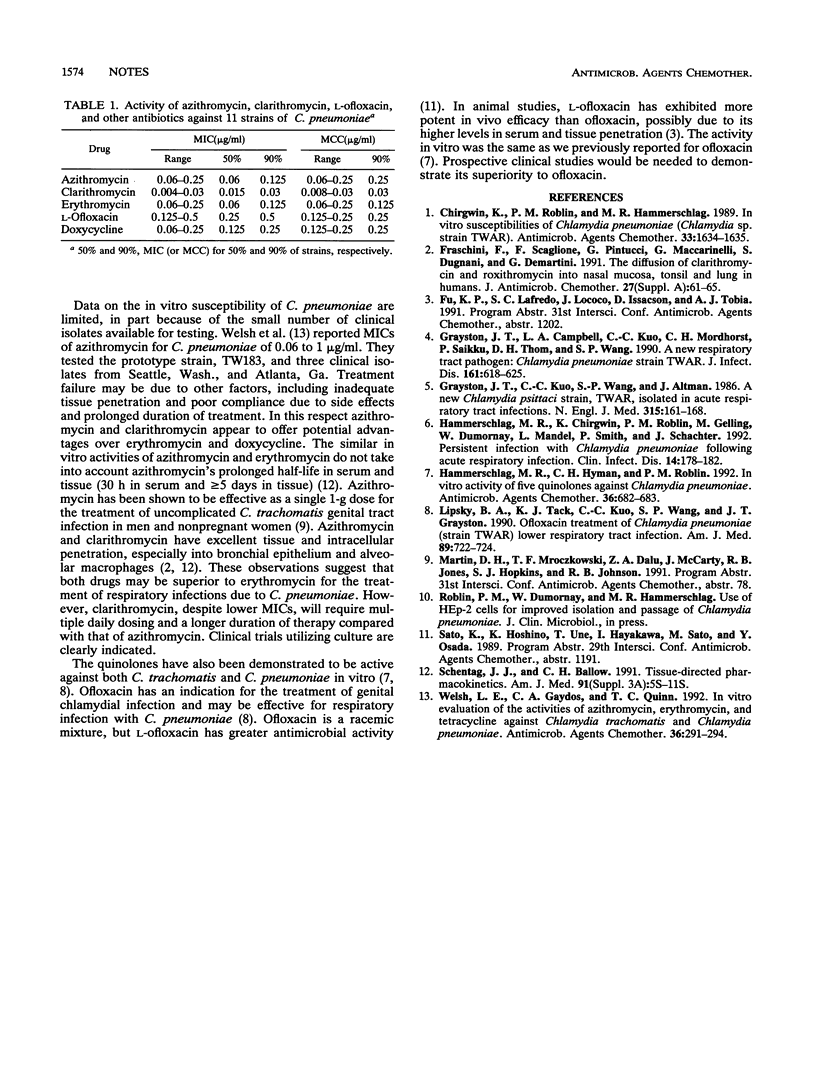Abstract
The in vitro susceptibilities of 11 strains of Chlamydia pneumoniae to azithromycin, clarithromycin, erythromycin, L-oflaxacin, and doxycycline were determined. Clarithromycin was the most active agent tested, with an MIC for 90% of strains and minimal chlamydiacidal concentration for 90% of strains of 0.03 microns/ml. The activity of azithromycin was similar to those of erythromycin and doxycycline, with MICs for 90% of strains of 0.125 to 0.25 microns/ml. However, the prolonged half-life and enhanced tissue penetration of azithromycin should allow for less frequent dosing and shorter duration of therapy than with erythromycin or clarithromycin. L-Ofloxacin had activity similar to that of ofloxacin, with MICs of 0.125 to 0.5 micron/ml. From the results of this in vitro study, azithromycin and clarithromycin appear to be effective antibiotics that may have a role in the treatment of infections due to C. pneumoniae.
Full text
PDF

Selected References
These references are in PubMed. This may not be the complete list of references from this article.
- Chirgwin K., Roblin P. M., Hammerschlag M. R. In vitro susceptibilities of Chlamydia pneumoniae (Chlamydia sp. strain TWAR). Antimicrob Agents Chemother. 1989 Sep;33(9):1634–1635. doi: 10.1128/aac.33.9.1634. [DOI] [PMC free article] [PubMed] [Google Scholar]
- Fraschini F., Scaglione F., Pintucci G., Maccarinelli G., Dugnani S., Demartini G. The diffusion of clarithromycin and roxithromycin into nasal mucosa, tonsil and lung in humans. J Antimicrob Chemother. 1991 Feb;27 (Suppl A):61–65. doi: 10.1093/jac/27.suppl_a.61. [DOI] [PubMed] [Google Scholar]
- Grayston J. T., Campbell L. A., Kuo C. C., Mordhorst C. H., Saikku P., Thom D. H., Wang S. P. A new respiratory tract pathogen: Chlamydia pneumoniae strain TWAR. J Infect Dis. 1990 Apr;161(4):618–625. doi: 10.1093/infdis/161.4.618. [DOI] [PubMed] [Google Scholar]
- Grayston J. T., Kuo C. C., Wang S. P., Altman J. A new Chlamydia psittaci strain, TWAR, isolated in acute respiratory tract infections. N Engl J Med. 1986 Jul 17;315(3):161–168. doi: 10.1056/NEJM198607173150305. [DOI] [PubMed] [Google Scholar]
- Hammerschlag M. R., Chirgwin K., Roblin P. M., Gelling M., Dumornay W., Mandel L., Smith P., Schachter J. Persistent infection with Chlamydia pneumoniae following acute respiratory illness. Clin Infect Dis. 1992 Jan;14(1):178–182. doi: 10.1093/clinids/14.1.178. [DOI] [PubMed] [Google Scholar]
- Hammerschlag M. R., Hyman C. L., Roblin P. M. In vitro activities of five quinolones against Chlamydia pneumoniae. Antimicrob Agents Chemother. 1992 Mar;36(3):682–683. doi: 10.1128/aac.36.3.682. [DOI] [PMC free article] [PubMed] [Google Scholar]
- Lipsky B. A., Tack K. J., Kuo C. C., Wang S. P., Grayston J. T. Ofloxacin treatment of Chlamydia pneumoniae (strain TWAR) lower respiratory tract infections. Am J Med. 1990 Dec;89(6):722–724. doi: 10.1016/0002-9343(90)90212-v. [DOI] [PubMed] [Google Scholar]
- Schentag J. J., Ballow C. H. Tissue-directed pharmacokinetics. Am J Med. 1991 Sep 12;91(3A):5S–11S. doi: 10.1016/0002-9343(91)90394-d. [DOI] [PubMed] [Google Scholar]
- Welsh L. E., Gaydos C. A., Quinn T. C. In vitro evaluation of activities of azithromycin, erythromycin, and tetracycline against Chlamydia trachomatis and Chlamydia pneumoniae. Antimicrob Agents Chemother. 1992 Feb;36(2):291–294. doi: 10.1128/aac.36.2.291. [DOI] [PMC free article] [PubMed] [Google Scholar]


